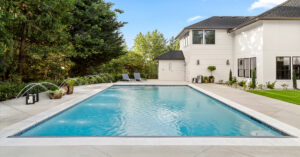
As we get older, our requirements and need change. Making sure your home is safe and secure is essential. There are various adaptations that you can make to reduce hazardous risks, helping you to feel comfortable in your own home. Here are 10 tips on how to adapt your home as you get older.
Getting in and Out of Your Home
As you enter old age, you may find it difficult in getting in and out of your home. To make the process easier, you may benefit from a handrail or ramp that you can place outside your front door. Make sure to check out this article where you can find more information on the different types of ramps available to ensure you find the right one for you. You may also want to consider adding an outdoor light outside your property to help you know where you are going when it’s dark. Make sure to place it so when the light is triggered, it won’t cause any disturbances to your neighbors or disrupt your sleep.
Answering the Door
If you find it difficult to answer the front door, you may benefit from having a system in place that allows you to communicate with visitors as well as controlling who you allow into your home. You could install an intercom so you know who is outside or an easy-to-fit wireless doorbell that features an entry phone, which you can place near to you. A video entry phone can provide many benefits, enabling you to see who is at the front door. Some entry phones have a button that you can press which opens the front door for you, meaning you don’t have to get up. If you have relatives or home aid help who need to come in, you can place a door key in a secure box by your front door, so they can let themselves in without any problems.
Maneuvering Around Your Home
To get around your home with ease, it’s important that you keep it well lit. Whether you are getting out of bed or entering a room, you should consider purchasing motion-sensor lights that can switch on automatically as you maneuver around. You can also have your door frames widened if you are a wheelchair user. If you need more space but want to keep all your important facilities such as your shower or toilet on one floor, you may wish to extend your home. However, be sure to consult with a qualified architect or surveyor first.
Stairlift
Getting up and down the stairs as you get older can become more of a challenge. Depending on the layout of your home, you may be able to install a stairlift which can provide you with assistance. If you can’t afford a stairlift, an extra banister rail may be all it takes to help you get about your home. However, if you rent your property or share access with other tenants, you may need to seek permission from your landlord before you make any changes.
Getting into Bed
If you struggle with getting into bed, you may want to consider having raisers installed. Doing this will mean you do not have to bend as far. There are also powered riser-recliner chairs as well as specialist beds that can raise you into a position, which can make it easier for you to stand, sit or lie down. You can also buy easy-reach grabbers to help pick up items that are far away.
Bathroom Tips
There are various changes that you can make to your bathroom to make it more accessible as you get older. There are hands-free toilets that include drying functions and automatic washing that comes into operation while you are seated. To help support your weight, you may want to consider installing a battery-powered bath lift to help assist you in getting in and out of the bath. Many people opt for a wet room style bathroom instead, meaning you can walk straight in without the worry of having to rely on any equipment.
Kitchen Tips
It’s important to take time to think about how you use your kitchen to come up with ways to ensure you are out of any danger. If you need some assistance while cooking, why not purchase a perching stool, which can give you much-needed support. A spike board can also be useful which allows you to cut and peel vegetables with one hand. If you struggle with picking up or moving things, you should consider buying wide-handled cutlery and high-rimmed plates.
Sight Problems
If your vision is deteriorating, there are several things that you can place around your home to keep your independence and ensure you are out of harm’s way. Putting down colored tape on the edge of your stairs and borders can make it much easier for you to navigate around the home. There are various hazards that you need to be aware of, such as loose carpets and trailing wires, so you may want to contact a home improvement agency who can come in and give you handy tips and advice to ensure you are safe.
Hearing Problems
It’s important that you are safe should an emergency arise. Therefore, having smoke alarms fitted around your home is essential. Fitting wireless smoke alarms around your property means that when one goes off, they all go off. You can’t put a price on life, so make sure to regularly test your alarms so you can be confident they’re in working order.
Memory Problems
For those who suffer from memory problems, it can be hard to find important items such as your keys or purse. Therefore, using an item locator may be hugely beneficial. You can attach small tags to the items you want close by. If you lose an item, all you need to do is simply press a button on the item locator, which will make the device beep and flash to help you find what you are looking for.
Keeping yourself safe as you get older is incredibly important. If you live on your own, there are various tips and techniques that you can use to ensure your home is risk-free, allowing you to enjoy your senior years without any worries.


